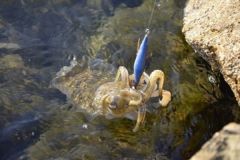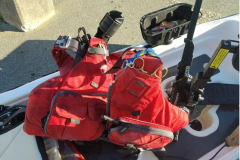Jigs or squids for fishing cephalopods in kayaks
There are many calamarettes or jigs dedicated to octopus, cuttlefish and squid. There is a large choice at the retailers of all shapes and colors. I will show you the ones that are in my tentacle box.
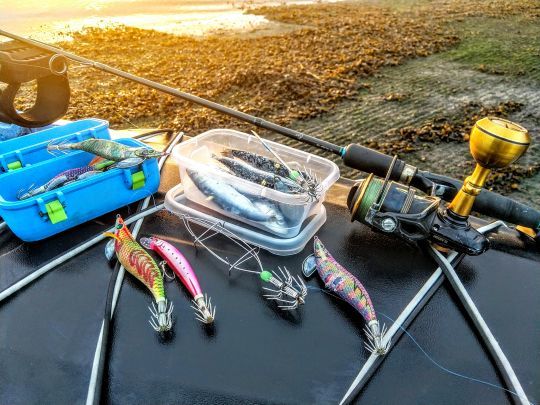
The traditional ones, often made of fabric, at least, they are the ones I prefer, because I use from time to time, an attractant when the cephalopods are a little lazy. Different colors and different weights. I mount them all the time in a potence above a lead, from 50 to 80 grams according to the current.
Thanks to the pedal kayak, I am always fishing on the move, which also allows me to cover a larger area. And by dragging the lead on the bottom, the displacement of sand attracts a cuttlefish if there is one present in the corner. I also sometimes put a second smaller jig on top, a good meter away, preferably floating. This also attracts squid if they are hanging around, this is called the tataki method.
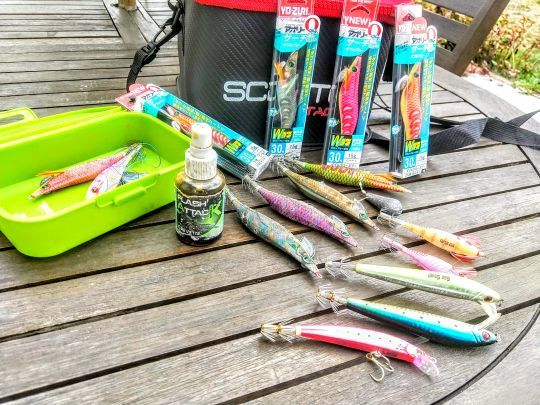
I use the Flashmer range for all these jigs of which the catalog is impressive. The bib jigs, similar to swimming fish, the hooks being replaced by a basket tail, preferably double, are very effective in kayaking.
The different fishing techniques
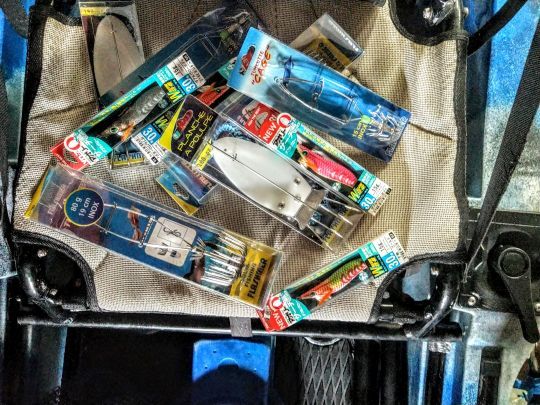
With these lures, we will be able to practice a slow trolling or fly fishing, there again the kayak with pedals finds its place. There are also hybrid jigs with a treble hook on the body and a basket in the tail, which can also be used for trolling or flying.

The old techniques still have their place nowadays. These methods are coming back in fashion for some time, perhaps due to the return of octopus on the Atlantic coast everywhere and especially on the tip of Brittany. We can also put them into practice on board our fishing kayaks.
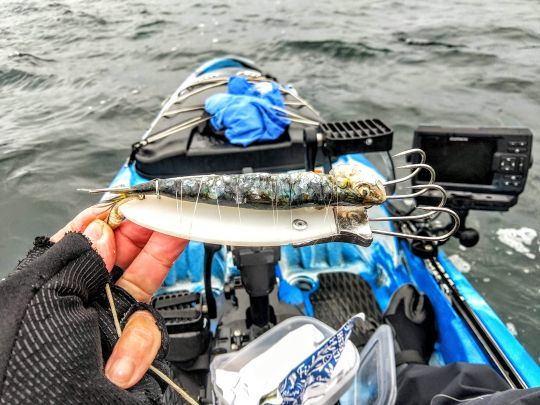
- The octopus board professional fishermen use it, so it's effective. Baited with an oily fish (sardine or mackerel) or a crab, this leaded board is put on the bottom on a cephalopod area and slowly dragged. It is equipped with very sharp hooks on the back of the board, white color. Its attractiveness can be reinforced by a piece of colored rag hung one meter in front, the octopus in the corner will not resist it.
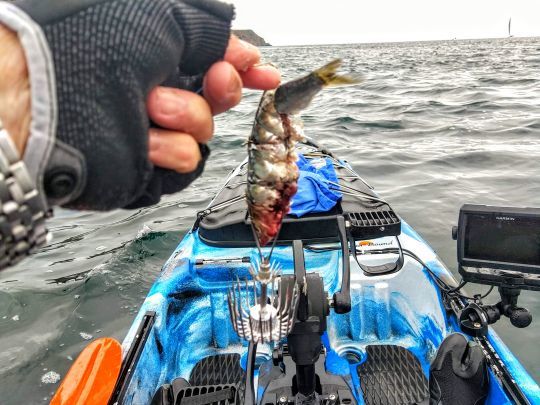
- Cage jigs there are also different shapes and weights, with needles or in cage form. They are used with a sardine as bait, some can be dressed with a Led to search for the red squid of the Mediterranean for example. For me, in Brest harbor, I use them as jigs in fabrics, mounted on a gallows above a leaded breaker which will show me the bottom. The jig evolving thus to 50 centimeters of the bottom which will limit the risks of hooking. I also use elastic to tie the bait on these traps.
These different techniques can be practiced in the same session, it's fun to compare and see what is most effective.
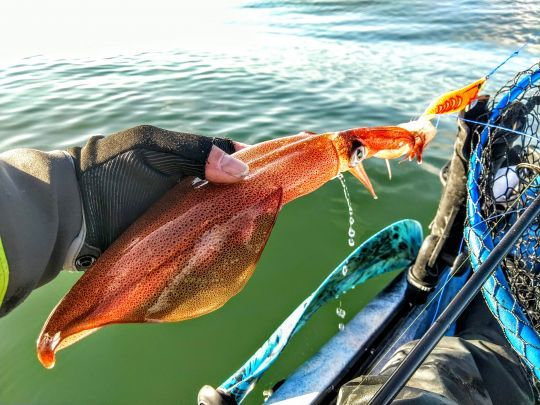
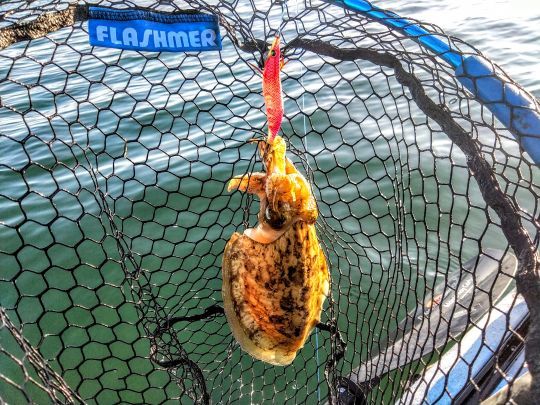
In the plate, cephalopods can be accommodated in many ways, cooked in sauce, fried, in ceviche for octopus (excellent). Do we not say that the pleasure of fishing continues in the plate?
Remember to release the smallest specimens and to respect the dates of closure of octopus fishing on certain dates and in certain places in the Mediterranean.









